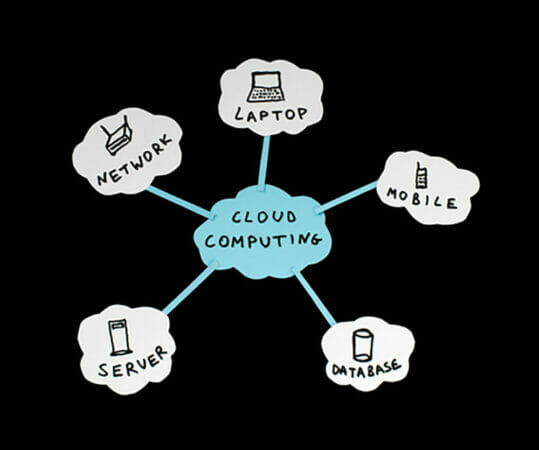Cloud backup, also called virtual cloud backup, refers to the storing of data in a hosted remote cloud-like service. In a way, it behaves like a form of cloud computing, enabling you to store and access information from multiple, highly accessible, and geographically dispersed server resources that make up a cloud architecture.
This service is usually paid on a pay-as-you-go model, with the customer simply paying for the amount of bandwidth they use and their chosen amount of storage space. This offers an alternative to traditional file storage methods and can be very useful for businesses that rely heavily on networked data or on a regular basis.
There are a number of reasons why businesses choose this form of storage. Typically, they are a cheaper and more flexible option than traditional file and backup services. They offer more bang for your buck because of the high degree of customization, which is available when you look at managed service provider (MSP) models.

You can configure your MSP to effectively protect all your business data even if you do not have physical access to each individual desktop. Additionally, a large MSP will be able to give you a good security blanket, so you do not have to worry about your data falling into the wrong hands.
With cloud backup solutions you will be able to restore data in a fraction of the time it would take for you to do it traditionally. Plus, based on their pricing plan, it appears that cloud services like Carbonite have really made their service so affordable for startup businesses and the average consumer. With Virtual Desktop Infrastructure or VDI, you can choose to store everything locally or to make copies of individual files to cloud-based storage.
The beauty of VDI is the ability to make copies of just the folder contents or even entire drives. Virtual Deduplication allows you to make small backup files, which are similar to a compact version of a USB flash drive. You can then access these files via a web browser, or even through a command line interface if you are on a Linux platform.
One of the major advantages of VDI is that it is highly efficient, especially in comparison to traditional on-site storage and backup service providers. A major advantage of VDI is that you can make as many copies of a single file as you want without having to wait for each copy to finish the download and upload.
This is highly beneficial when there is a lot of activity on a single file. Typically, cloud backup solutions that use VDI are more cost-effective than other types of storage and backup solutions.
- Can ChatGPT Write Essays?
- How To Make GPT Undetectable
- Can You Use ChatGPT To Write Essays?
- How To Get ChatGPT To Write An Essay
- Why Is Autoblogging.ai The Best AI Writing Tool?
- Does Turnitin Detect AI Writing?
- How To Use ChatGPT To Write An Essay You Can Be Proud Of
- How To Make ChatGPT Write An Essay That Rocks
- How To Make ChatGPT Undetectable
- Best AI For Writing Essays, Blog Posts, And Articles
Another aspect of VDI is that it is highly effective when used in tandem with Commvault Cloud Customers Shield. The two solutions work hand in hand thanks to the extensive set of features available for cloud backup and data protection.
One great example of this collaboration is when an individual business owner creates an app for his smartphone and accesses it from anywhere. Since the app is stored in the cloud, all of the data protection settings that are set on the smartphone are also applied to the cloud just like with services such as Commvault Cloud Customers Shield.
There are a number of additional factors that come into play when looking at the integration of cloud backup with Commvault Cloud Customers Shield. For example, all cloud vendors offer highly available and easy-to-use management consoles.
Many cloud vendors also offer highly available security and compliance tools that greatly simplify the compliance and regulatory reporting process of cloud vendors. In addition, there are a number of third-party components that can be used by cloud vendors, which allows customers to take full control of their data.
A key advantage of VDI is that VDI and cloud backup are highly effective when used together. For instance, an enterprise administrator can install applications, create workstations, and run custom programs on a cloud data management server without needing to have any knowledge of how the VDI is installed or run.
However, cloud data management servers offer more than just remote access. A VDI application hosted on a cloud data management server will allow IT professionals to make more use of the computer resources available on the cloud.
The ability to use VDI and cloud backup is only one of the many ways in which users can utilize managed services. Another way in which they can be used together is via granular recovery.
With granular recovery, IT professionals can restore only a portion of a particular disaster recovery plan, rather than having to retrieve and recover the entire thing. There are a variety of other ways in which cloud backups and VDI can be used to enhance the efficiency of an enterprise’s disaster recovery efforts.
Are businesses ready for this integration? Let’s see how this pans out.
Meet our resident tech wizard, Steve the AI Guy. Now, before you get any wild ideas, let’s clear up one thing – he’s 100% human! I mean, he’s got the work history to prove it. He spent a decade diving into the deep end of the tech industry doing business intelligence work, splashing around with two of the world’s largest business consulting companies, Deloitte and Ernst & Young. Learn More










